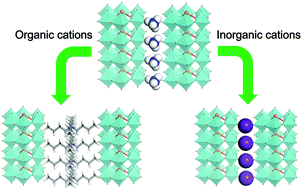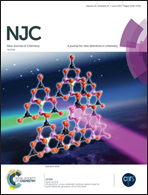Synthesis of crystalline molybdenum oxides based on a 1D molecular structure and their ion-exchange properties†
Abstract
The development of new materials for ion-exchange applications is interesting and important. A crystalline material based on an anionic telluromolybdate molecular wire, Mo-Te-O, was carefully synthesized, and it exhibits unique ion-exchange properties. On the one hand, NH4+ is exchanged with alkaline metal ions. Cs+, as radiation waste in nuclear wastewater, can be selectively removed rapidly and efficiently. On the other hand, because of the flexible crystal structure, large organoammonium cations are incorporated in the structure of the material by ion-exchange. After ion-exchange, the molecular wire building block becomes stable.



 Please wait while we load your content...
Please wait while we load your content...